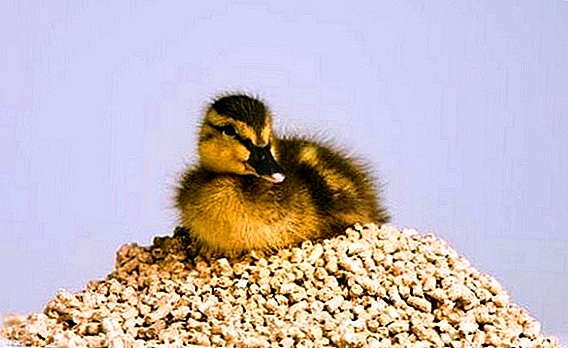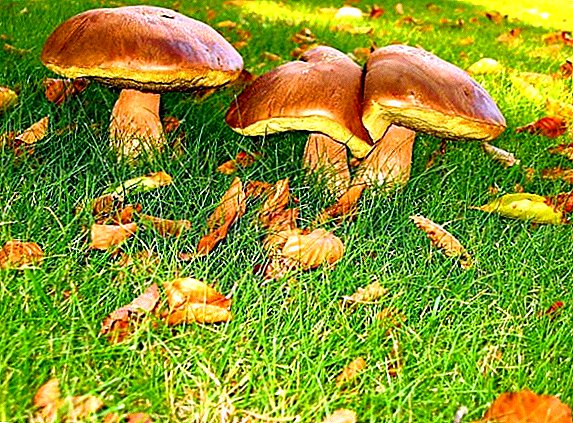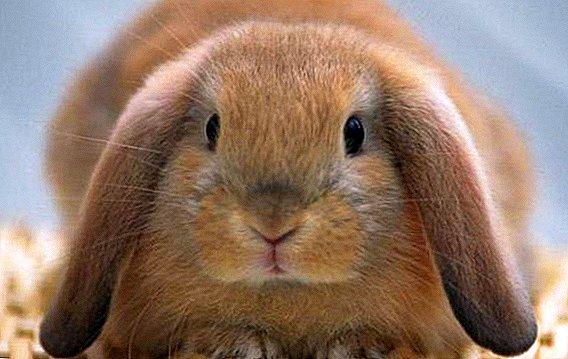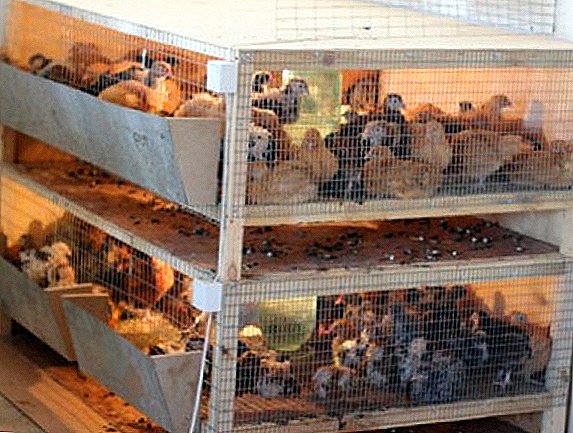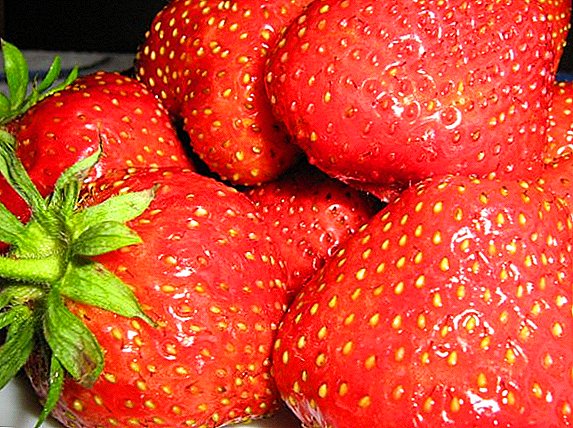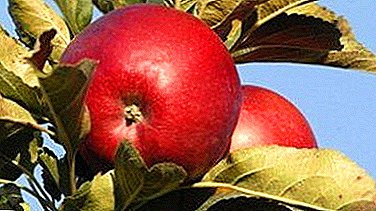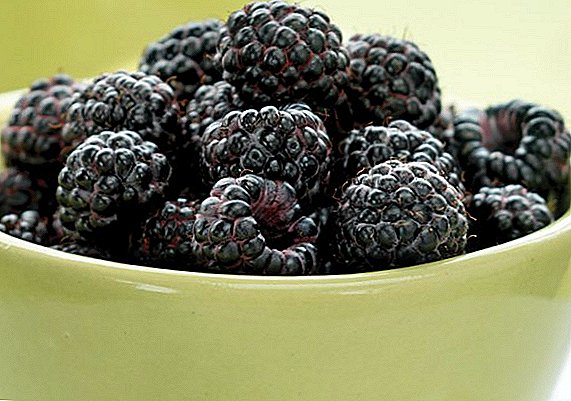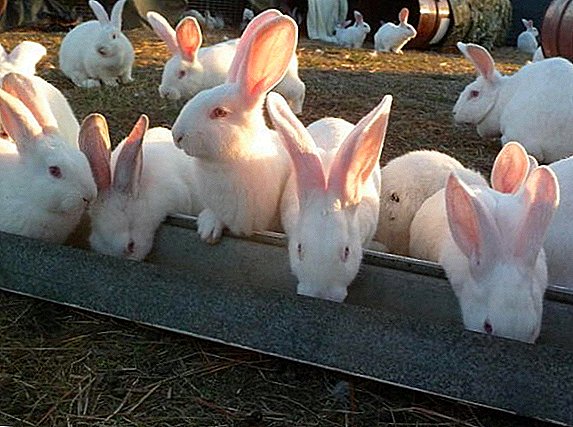 Breeding rabbits is quite simple - it does not necessarily need spacious rooms and large expenses.
Breeding rabbits is quite simple - it does not necessarily need spacious rooms and large expenses.
You can even start in the yard or at the usual cottage.
How to organize a business in rabbits, which will bring the maximum income, you will learn from this article.
The development of industrial rabbit today
Rabbit breeding in the CIS countries is going through difficult times. After the collapse of the USSR, once successful farms and collective farms began to disappear, as fodder, veterinary preparations, electricity, water, gas sharply went up, while prices for finished raw materials remained at the same level. In addition, this industry has lost the support of the state.
In Ukraine, only Plemzavod Ukraine LLC remained from a large number of enterprises. The branch is kept on private farmers: according to experts, only 1.5–2 million rabbits are raised per year in modern Ukraine, with the lion’s share being kept on private farms.
In Russia, thanks to the hard work of private farmers, rabbit breeding begins to revive. The pace is gradually increasing: in 2015, private farms produced approximately 1,400 tons of rabbit meat, and in 2010 this figure did not exceed 786 tons. 
In European countries, rabbit breeding is developing successfully. The leaders in the production of rabbit are Italy, France and Spain. For example, French farmers produce 2.5–3 million tons of rabbit meat and about 110 million rabbit skins annually. The leaders in the export of rabbit meat and fluff are Hungary and France. Annual revenue in this industry in Hungary reaches $ 50 million.
In France, there are special breeding centers that are engaged in artificial insemination of rabbits. They report to the state about the quality of semen - in this way the state carries out a breeding program. In addition, it provides comprehensive support for rabbit breeders, as well as the introduction of modern technologies.
Did you know? The true leader in rabbit breeding is China. Its production of rabbit meat is 45% of the world.
Modern breeders are working closely with research institutes that are engaged in the development of veterinary products, equipment and the latest technology. This allows you to increase productivity and minimize human labor. In the European rabbit breeding service for 3,000 rabbits, labor costs do not exceed 30 man-hours per week.
Thus, breeding rabbits is a promising direction for Ukrainian and Russian farmers. It allows you to get the most rapid increase in production, and the market for its implementation is free. The cost of equipment for such farms is significantly lower than in other areas. For example, organizing a pig farm requires 8 times more money than for a rabbit. In addition, from these animals you can get not only meat, but also skin and fluff. 
The principal factors of breeding rabbits on an industrial scale
Since rabbits grow quickly, breeding them is quite simple. However, since we are talking about a large number of animals, it is necessary to take into account various factors, about which the owner of a single fluffy animal may not think.
Learn how to breed rabbits in the country, in the garage, in the pits.
Production cycle
The life of rabbits can be divided into cycles, which greatly simplifies the work on the farm. Many farmers make cycle records on tables that weigh in a cage. This kind of accounting of rabbits is convenient if the queens are not larger than 5, but with large quantities there may be confusion. The farmer is confused, not knowing what to do with the rabbits: who should happen, whom to slaughter, whom to sow.
This task can be alleviated by the system of cyclical nature of the work developed by E. V. Maklyakov. It consists in dividing all jobs into a 7-day cycle, which allows working on a farm only one day a week. However, this does not mean that you should not go to the farm every day, because you still need to feed the animals. This system is designed to streamline work.  Tags on Maklyakov's rabbit cages
Tags on Maklyakov's rabbit cages
The principle is to accurately track the date of commissioning and conduct weekly relevant work:
- On the 7th day after mating, you can make a test mating - thus increasing the chance that the rabbit will give offspring.
- 21 days after insemination, it is necessary to plant it in the uterine cell, if necessary.
- On days 28-29, it is necessary to check the queen cell and prepare the rabbit for childbirth.
- The term for carrying rabbits is between 31-32 days, so for 35 days it is necessary to check the queen and, if necessary, remove the dead rabbits. This must be done weekly. If the rabbit has not given birth, it can be given for re-mating or put in the "reserve".
- The main work falls on the 3rd week after the roundtrip. It is necessary to remove the queen cell - by this time the cubs can already move independently in the cage and the need for a nest is no longer there. If it is not removed, the mother liquor turns into a toilet for rabbits. On the same day, the rabbit can be reused in the mating. But then you need to return her to the rabbit, even if she is pregnant.
- On the 45th day of life, rabbits can be transplanted from the female. And her - to prepare for future childbirth, if necessary, put in the uterine cage (on this day, the female will be pregnant for 3 weeks).
Check out the best programs for accounting for rabbits.Such a cycle of reproduction takes 8 weeks. This scheme allows you to get the maximum income from the farm and as a result have enough well-fed rabbits, which will be deposited from the pregnant female.
Further content eared directed to feeding. After transplanting rabbits, they can be slaughtered for 70, 77, 84, 91 days of life. After that, the cells are cleaned and new animals are transplanted there.
This formulation of work on a rabbit farm allows for a stable supply of fresh meat to customers.
E. V. Maklyakov on planning work at a krolefer farm: video
Use of hybrids
The use of various hybrids has allowed farmers to significantly increase production and reduce costs. Thanks to the best practices of breeders, rabbit breeders have a large selection of diverse hybrids, which are characterized by high growth rates, excellent immunity and good reproduction ability.
Find out which rabbits are best crossed and how to do it correctly.
Artificial insemination
The use of such fertilization can significantly reduce the influence of seasonal factors on the breeding of rabbits. As a result, the efficiency of the rabbit farm increases and it becomes possible to clearly plan its work.
In addition, the need for keeping a large number of males for mating is significantly reduced. Under normal conditions on a small farm for natural mating, there are 1-2 males per 10 females, and a large one - up to 40 rabbits per 200 rabbits. Artificial insemination allows the use of one male for fertilization from 20 to 50 females.
And quality indicators remain high:
- the probability of fertilization is 89%;
- the brood from such insemination is from 6 to 9 rabbits in one cycle.
Is it profitable or not to breed rabbits on a large scale at home
Creating a rabbit farm requires a serious approach and informed decisions. The pros and cons of experienced farmers are well known, but beginner breeders need to learn more about them in order to understand the specifics of the industry well.
Learn how to grow rabbits according to the Mikhailov method.Pros:
- high efficiency and growth rates, as rabbits multiply and grow very quickly;
- the demand for rabbit meat is very high;
- besides meat, they give pelts, which are also in demand;
- there is also a need for live rabbits, as well as for their livelihoods (manure);
- farm costs are minimal, and you can start your own business at home;
- with proper maintenance, breeding of rabbits is not subject to seasonal fluctuations (for example, three females and a male per year will increase the livestock to 100 individuals);
- low level of competition in the industry and high demand for ready-made raw materials;
- the state allows you to work legally on preferential terms.

Disadvantages:
- eagles are quite demanding of conditions of detention;
- need regular vaccination and examination by a veterinarian;
- with improper keeping or viral diseases, the mortality rate among the young is very high;
- it is necessary to strictly comply with hygiene standards;
- for the sale of meat it is necessary to obtain sanitary documents that require additional costs - both time and money.
How to start large-scale breeding rabbits
At the very beginning of the activity the farmer must solve the main issues:
- Where to contain.
- What breed to grow.
- How to choose the right rabbits.
Learn how to correctly determine the age of the rabbit.
Base for industrial rabbit breeding
The choice of a place for arranging a rabbit farm depends only on the farmer himself - this can be either a summer cottage or a house in a village. 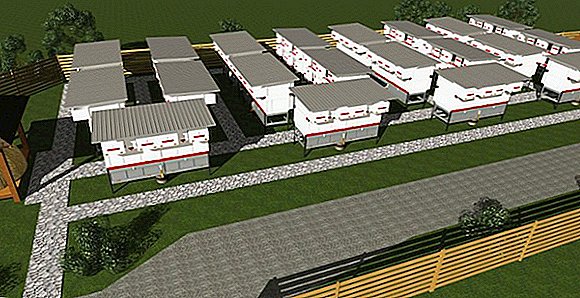
Some rabbit breeders keep furry animals even within the city. At the dacha, you can equip the shed, under which it is convenient to place the cells, or equip a special room. It depends on the climate.
Important! When organizing a farm, it is also necessary to take into account that these animals breed very quickly, so there should be a lot of space (with the expectation of new broods).
However, the main condition for choosing a place is remoteness from large agricultural and industrial facilities (farms, factories, factories, etc.), water bodies, and also airports:
- If the rabbitry is placed in close proximity to farms or reservoirs, there will be a high probability of the occurrence of infections that can be carried by insects.
- The increased noise level, which originates from an industrial zone or airport, can cause stress, which will lead to a significant reduction in productivity.
It is best to build a farm on a flat surface. The room should be as comfortable as possible: it is necessary to constantly maintain the optimum temperature, but at the same time be well ventilated. Minimize costs will allow the use of new technologies of construction aimed at heat and waterproofing.
It is also necessary to think over the ventilation system, since the animal needs a comfortable heat exchange with the environment. So, in the winter, natural ventilation is sufficient. And in the summer, when the room temperature rises, compulsory ventilation is necessary.
When designing a farm, it is necessary to provide a place for outbuildings where food will be stored, as well as a room for slaughtering rabbits. Feed storage should be well heated. It is necessary to maintain a low level of humidity in order to protect stocks from mold - these fungi develop rapidly and can cause various diseases, such as rhinitis and bronchitis.
You can buy food from manufacturers in large quantities. But not all farmers can afford large deliveries, and buying good quality feed in small quantities is quite expensive.
Learn how to feed rabbits with feed, pelleted feed, green fodder, and sprig fodder.It is more profitable to organize independent production of feed. This will allow you to control the quality of the feed, as well as additionally conduct a secondary business for the production of feed. For this you need to buy a grain crusher and a granulator. One should always prepare food for rabbits for several months in advance, or even stock up in the summer for the whole winter.

The slaughterhouse must be provided with an additional ventilation system so that it is well ventilated. Also at its organization it is necessary to adhere to sanitary standards. At the slaughterhouse should be tables and sinks, preferably stainless steel, and a refrigerator, which will be kept carcasses.
For the disposal of waste products necessary cesspool. Its size may vary depending on the volume of production, but for a start you have enough pits measuring 2x3 meters.
Important! Rabbit litter is a great fertilizer that you can use on your plot or sell to other farmers.
Choosing the right breed
Having decided on the place and the possible volume of production, it is necessary to choose a breed.
Animals need to be assessed by the following parameters:
- weight and size;
- the length of the coat;
- productivity;
- the amount of fluff;
- mortality;
- care requirements.

All breeds of rabbits can be divided into fur, meat and meat-skinny. The use of meat and animal breeds allows you to develop rabbit in several directions. These breeds include the Californian rabbits, silver, giants, as well as Soviet chinchillas.
For meat
The most attractive beef breeds are Californian and New Zealand rabbits. They can be slaughtered already at three months of age, and at the 4th month they can be used for breeding. They have delicious, tender meat. The weight of adults reaches 4 kg.
It is also necessary to note the gray giant breed, which has pleased many farmers throughout the CIS. The weight of these animals can reach 6 or even 7 kg.
Learn how to choose a bunny when shopping.
On the skin
One of the most common breeds of rabbits whose pelts are used in fur products is the Soviet chinchilla. This breed is characterized by high-quality sandpaper, as well as good meat.
Skins of black-brown breed are in great demand. They have dark hair and are used without dyeing, in its natural form. 
Breeds such as Russian ermine, Angora, English or Rex can also be used to obtain high-quality skins.
Experienced breeders recommend California breed rabbits, as the best option for novice farmers. This breed has not only high profitability, but also good immunity to viral diseases.
Learn how to determine the sex of the rabbit.
The right choice of healthy rabbits
The best place to buy rabbits - breeding farms and state-owned enterprises with a good reputation.
However, before buying it is necessary to study all the features of the selected breed:
- color of coloring;
- average weight;
- wool quality;
- breeding features.

When choosing rabbits it is necessary to follow the absence of the following factors:
- spinal deformities - occurs when rabbits are kept in cages with a small ceiling;
- defects of the extremities (from clubfoot to incorrect setting of the paws);
- mass deficiency - occurs for several reasons: from a lack of food and water, from the large grouping of animals, the recent illness;
- the main signs of degeneration of the breed - reducing the weight of the animal, changes in the structure of the skull, ears, body proportionality. Such rabbits cannot be used in further breeding;
- deviations from standards (in color and quality of fur);
- visible signs of various diseases.
Find out what diseases rabbits can hurt.It is necessary at least:
- to examine the ears for the presence of parasites;
- check that the size of the front teeth does not affect eating (this problem occurs when the front teeth are elongated);
- inspect the muzzle, airways and hind limbs.

After inspecting the baby rabbits, ask for the parents to be inspected - a conscientious breeder will not refuse you. Avoid farmers who carry out rabbits in a box - you can slip a non-working individual, giving out for the uterus.
After the acquisition of young stock, it is necessary to gradually adapt it to the new conditions, but at the same time first keep it in conditions as close as possible to the former. To do this, visit the rabbit farm.
Find out when rabbits are deposited from a rabbit.
Cages for industrial keeping and breeding rabbits
An important point in rabbit breeding is the choice of cages where animals will be kept.
What cells are better to buy
The range of cells is very large. The principle of their construction is similar, but they can have significant differences.
Distinguish cells by the following criteria:
- depending on the occupied area - they are single-tier, two-, three- and more tier;
- depending on the age of the rabbits - there are cages for young animals and for adults;
- depending on the breed - the cells can be of different sizes: for dwarf breeds, for ordinary and for giants;
- в зависимости от целей производства - различают клетки для декоративных пород и для производственных целей.

Необходимо отметить отдельный вид клеток, предназначенный для беременных крольчих и их выводков - так называемые маточники. They differ from the usual presence of the house-nest.
Learn how to make cells using the Zolotukhin method, a rabbit house.
Cell arrangement
Any cell should have:
- drinking bowl;
- feeding trough;
- sennik;
- waste tray.
When choosing a feeder, it is necessary that it:
- contained enough food;
- easy to wash;
- It was convenient to use not only for the farmer, but also for animals.

There are several types of feeders - each is designed for a specific feed:
- nurseries used for hay - it is convenient to attach them to the cage door;
- cup - for feeding rabbits with root crops;
- bunker - used as automatic feeders, intended for feeding with grain or granulated feed;
- gutter They are versatile, as they are suitable for feeding both hay, and root crops or granulated feed.
Important! Care must be taken that the rabbits do not climb into the feeder and do not soil the food.
Drinkers come in 3 types:
- nipple;
- pan;
- auto drinkers.

But on an industrial scale most often use auto-drinkers of complex construction. Water is supplied from a large stainless steel water tank. A small keg with a distribution float is connected to this tank. Water is supplied through a system of pipes and enters the bowl drinkers. Filling takes place thanks to the float system, which supplies water to the desired bowl automatically.
Laying in a cage at the same time:
- plays the role of insulation;
- makes it more comfortable stay there rabbit.
The role of the mother liquor can play a box of plywood, plastic or boards. The upper part of such a box should be removed, and on one of the sides there should be a hole through which the bunny can freely enter and exit.
Many breeders recommend the use of a fixed structure, which provides the ability to close the nest. Access to it is opened only when the uterus prepares to roll out.
Conditions of detention
In the cages should be pallets that will be easy to remove and wash. Their main goal - the collection of waste products. However, the use of pallets on a farm with 200 queens is irrational and rather time consuming. Therefore, on large farms, under the cage, a cone-shaped tank is installed into which all waste flows. Such a system facilitates the care of rabbits, but requires additional ventilation so that the animals do not suffocate from the fumes.
To remove unpleasant odors, it is necessary to carry out the ventilation system and equip it with a fan. This will allow, if necessary, to include exhaust and accelerate air circulation.
It is necessary to place the cells in such a way that there are no sources of heat nearby and they do not stand in a draft. Otherwise, rabbits can easily get sick or spoil valuable fur.
Eared animals very poorly tolerate high temperature and humidity, so the optimum temperature should be 12-18 ° C, and the maximum difference should not exceed 5 ° C. Humidity in the room should be in the range of 60-75%.
Important! Keep rabbits in the open space is difficult, as the animals can get sunstroke in hot weather. As protection against direct rays, it is necessary to cover the cells with a thin layer of hay or straw.
If rabbits are kept in cages under a canopy, they feel great in daylight and do not require additional lighting. Keeping indoors also does not require special lighting - the animals have a rather small window. However, some breeders use an additional light source, which operates from 6:00 to 21:00. 
How to care for rabbits
An important point in the work of the rabbit farm is cleaning, disinfection and prevention of various diseases and parasites.
Cleaning and disinfection of housing, equipment
Rabbits are quite demanding in terms of hygiene, so the cells, aviaries and other equipment must be regularly disinfected. This is especially important when kept indoors.
The rabbitry must be regularly ventilated, since carbon dioxide and ammonia accumulate in it very quickly.
Feeders and drinkers need daily cleaning. Cells are cleaned as they become contaminated, but do not do this less than twice a week. Indoors, cells must be cleaned daily. With an efficient waste collection system, the frequency of cell cleaning can be reduced.
During harvesting, the litter must be replaced so that it is always fresh and clean.
Disinfection is one of the most important rabbit care measures. Preventive disinfection must be carried out 2 times a year. And quarantine pens, where they contain replenishment, must be processed every time after relocation.
Rabbit disinfection: video
Disease prevention
Regardless of the ways of keeping, rabbits need regular vaccination, as well as in the treatment of various wounds. For preventive purposes, new rabbits must be kept in quarantine for 21 days.
The most common diseases in rabbits are:
- myxomatosis;
- VGBK;
- rhinitis;
- stomatitis;
- coccidiosis;
- pasteurellosis.
Learn about liver diseases, skin diseases, eye diseases, and ear diseases in rabbits.Vaccinated for myxomatosis put in the spring, as it is the carrier of insects, the activity of which falls in April-October. For young animals, you can put a comprehensive vaccination against these two diseases in early spring.
The optimal time for vaccination of rabbits is the age from 1.5 to 3 months.
What vaccinations do rabbits: video
Diet and diet, water
The basis for effective industrial breeding of rabbits is proper nutrition.
What can you feed
First of all: the rabbit must have food all the time. They are not suitable for them usual routine for people - 2 or 3 times a day, while the animal begins to starve. The first sign that there is not enough food is teeth marks on the cage - this is how a rodent tries to survive. Although this may indicate that the food is not enough fiber.
In industrial breeding, only barley, hay and water are included in the rabbit's diet. In winter, they add macaci to increase the fat content, but not too much, as this may reduce fertility. For pregnant rabbits and females during lactation, you can add feed beets and a small amount of carrots.
Important! The rabbit food system works by pushing the food already consumed with a new portion. That is, if an animal remains without food for a long time, it begins to deteriorate and poison the body.
The animal's body needs a lot of fiber, so hay must be constantly freely available. Another important factor is that when a rabbit eats hay, he grinds his teeth. And since the incisors grow constantly, they need to be eroded all the time.
Very nutritious hay is obtained from sorrel, rhubarb, legumes, cereals, plantain, burdock, alfalfa, dandelion and clover.
As mineral additives, chalk (1% of the feed volume), salt in the same dosage and bone meal per 2 g per rabbit are used.
Learn how to feed rabbits in the winter.
Than not
The diet should not include a number of products:
- cabbage, as it causes bloating in rabbits, and this can kill an animal;
- red beet or its leaves;
- do not recommend juicy grass, as it may contain toxins;
- Do not feed rabbits with branches of stone trees;
- legumes can be given in very limited quantities and only in combination with other plants;
- nuts;
- potatoes;
- pasta and bakery products;
- dope, wormwood, euphorbia, ramson and tansy.
How to water
To provide the animal with the necessary conditions for growth, it will take a lot of water. A rabbit can come to a drinking bowl more than 60 times a day. Water is needed to ensure normal excretion of toxins from the body. Also, lack of drinking leads to a decrease in appetite, which is why the animal starts to starve and gain weight poorly. 
In winter, it is better to pour warm water, as it will last longer without freezing. If it is not possible to fill up the drinker during the day, it is filled with clean snow.
However, in this case, the animal's body has to spend energy on the melting of frozen liquids, and this leads to an increase in feed consumption. Also, when drinking snow, there is a possibility of developing colds in animals.
In winter, when industrial rabbit breeding is best suited electric drinker.
Find out how to water the rabbits.
Industrial crossbreed rabbits
Unlike conventional crossbreeding, where one breed reproduces its own kind, offspring from two separate breeds is derived in industrial crossing, in which the descendant combines the best characteristics of parents (the so-called heterosis effect). For the maternal line choose breeds with good milkiness and survival rate of young individuals, and for the fatherly - meat breeds with high productivity.
To improve the efficiency, you can apply a three-breed crossing, in which a cross from the 1st generation is taken as a mother. Such offspring are even more superior than purebred "brothers." For example, a descendant of a gray giant and a New Zealand white at the age of 90 days freely surpasses purebred rabbits by 200-300 g. 
However, with such a crossing one should carefully pick up pairs: some varieties do not fit together well. You will not get advantages when joining such breeds:
- white giant and Viennese blue;
- gray giant and Soviet chinchilla.
Did you know? In the rabbit uterus bifurcated, which allows you to simultaneously bear the offspring of different males.For industrial crossing you will need to either keep 2 separate breeds, or have one in your farm, and import the males from the other.
Industrial slaughter of rabbits
For industrial slaughter of rabbits on the scale of 100-200 heads per hour, premises up to 60 square meters will be suitable. m and the staff of 5 people.
The whole process can be divided into 7 operations:
- Bunny stunning.
- Slaughter and discharge of blood.
- Skinning.
- Nutrovka.
- Trimming the hind legs.
- Packaging.
- Cooling.

The most effective and humane method is electrostimulation - the device does not kill the animal, but only stuns, depriving consciousness. Industrial stunner is a special contact table with power supply. It has special guides, which facilitates the placement of the rabbit's head on the toothed contacts.
Important! Such equipment must be grounded.
In addition: if a rabbit dies from a painful shock (for example, when hammer is slaughtered) or a heart rupture, a certain amount of blood remains in small vessels. Penetrating into the muscles, it increases the acidity of the meat, which in turn adversely affects the shelf life of the product.
For slaughtering rabbits on the above scale, the manual conveyor is also well suited. The animal is hung on stainless steel hangers. Moves this design on the cable on rollers. For slaughter, the rabbit is cut its throat and drains the blood into a special pan - while its heart continues to work, pushing 2/3 of the blood in 1.5 minutes. As a result, he dies from blood loss.
The next step is to remove the skin from the carcass - it is pulled down from the bottom towards the head, as if taking off the stocking. First, cut it on the back paws and cut the front on the carpal joint with a secateur, and also remove the ears. It is easily removed, although it is not easy going around the head. You can pre-separate the head, but by some standards it is left to check the quality - it depends on the consumer products. There are also automatic devices for skinning, but it is advisable to use them only for large volumes (about 300 heads per hour).
It is easily removed, although it is not easy going around the head. You can pre-separate the head, but by some standards it is left to check the quality - it depends on the consumer products. There are also automatic devices for skinning, but it is advisable to use them only for large volumes (about 300 heads per hour).
Nutrovka - removal of excess viscera from the carcass. The muscles are cut with a sharp knife along the white line of the abdomen to the diaphragm. Of the organs leave only the heart, kidneys, lungs and liver.
Important! The liver should be carefully examined for coccidiosis bumps. Only in the absence of their body can you leave inside.
The operation must be carried out with extreme caution so as not to damage the rabbit's digestive system. After that shears cut off part of the hind paw along the hock joint. Next, the carcass is packaged and sent to the refrigerator at 0 ° C (then the product can be stored for up to 7 days) or in the freezer. 
Rabbit breeding in the post-Soviet countries is a profitable industry, the competition in which is not very strong. With proper organization, a farm can quickly pay for itself and generate substantial profits. In addition, rabbits can be bred not only as a source of meat and skins, but also as decorative pets. The benefit is the fact that the independent production of feed can be made an additional source of income, and the litter of rabbits can be sold as fertilizer.
Reviews


that it is better to engage in them only as a hobby and on a small scale, so to speak, rest your soul :)
If you set a goal on this to earn, then it is labor for wear ...)
In general, when I retire, I’ll start again))



